7 Swing Checks... Every Golfer Should Make This Winter!
Here are seven simple winter checks that will set you up to play your best next season
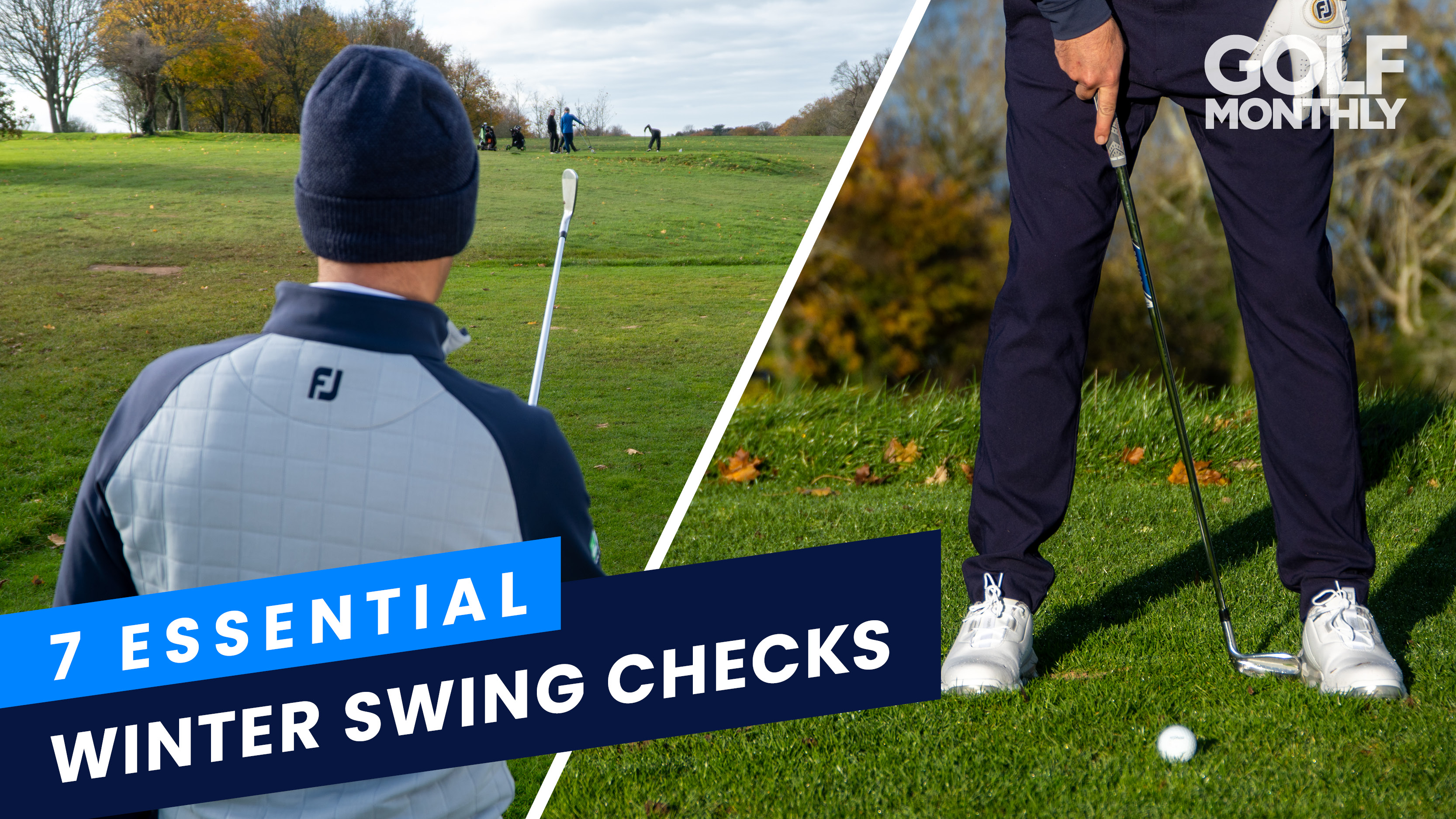

It’s easy for bad habits to inadvertently creep into your game during the golfing season. If this has happened to you, the winter months provide the perfect opportunity to get back to basics and check those all-important fundamentals so that you start 2023 off on the right foot. In the video and article below, PGA pro Dan Hendriksen runs through seven essential winter swing checks!
1. Alignment
If I had to pick one fault I see more commonly in amateur golfers than any other it would be poor alignment. More specifically, golfers aiming too far right. It’s very easy to be lazy with our aim and poor alignment leads to a plethora of swing faults. Too often we blame our swing for poor shots when in fact the origin is actually simply an error in the direction we are pointing.
The problem frequently stems from the way we approach the ball to address it. In a world where speed of play is everything it’s easy to just arrive at the ball from the side, step up and hit it.
In contrast, watch the world’s best players and you’ll see how much time and care they take to aim accurately. It's one of the things tour players do that you don't, and the key difference is that pros stand back behind the ball to look at their target and then approach it. If you need to learn how to aim in golf, start with this.

Stand behind your ball rather than at the side to improve your alignment
To make it easier, I’d suggest picking an intermediate target about a pace ahead of the ball to aim at - something like a leaf, a divot or a blade of grass. Then when you step in to aim the club you have something close by as your main focus rather than the distant target.
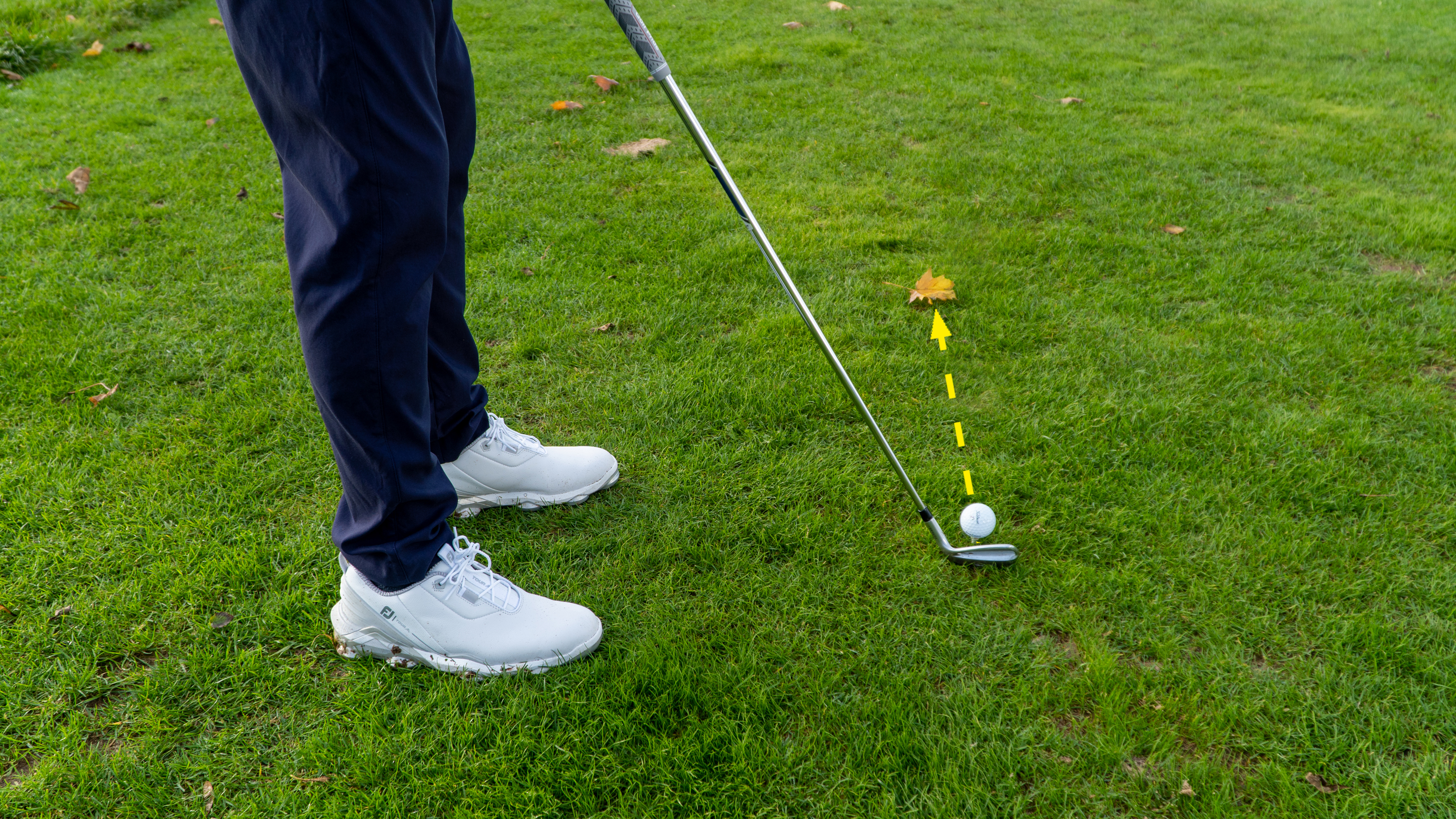
Line your club up with something a foot or so in front of your ball then take your stance
With the confidence the club is pointing at your target, form your stance with your feet positioned on an imaginary parallel track. If your tendency is to aim too far right this will feel very open to start with. You can check your aim by lifting your club up so that it forms a straight line from the leaf (or your chosen close-range target) to the ball, pointing at your distant target. Bring the club back towards your toe-line to check that your feet are following the same parallel line.

Try this final check to make sure your feet are parallel to your target line
2. Driver address position
It may sound like a simple check, but it’s surprising how much the ball position can creep back in your stance without you noticing. In order to maximise distance off the tee you need to start with a forward ball position. This is how launch angle and power are linked and is the key to unlocking those extra yards.
Subscribe to the Golf Monthly newsletter to stay up to date with all the latest tour news, equipment news, reviews, head-to-heads and buyer’s guides from our team of experienced experts.
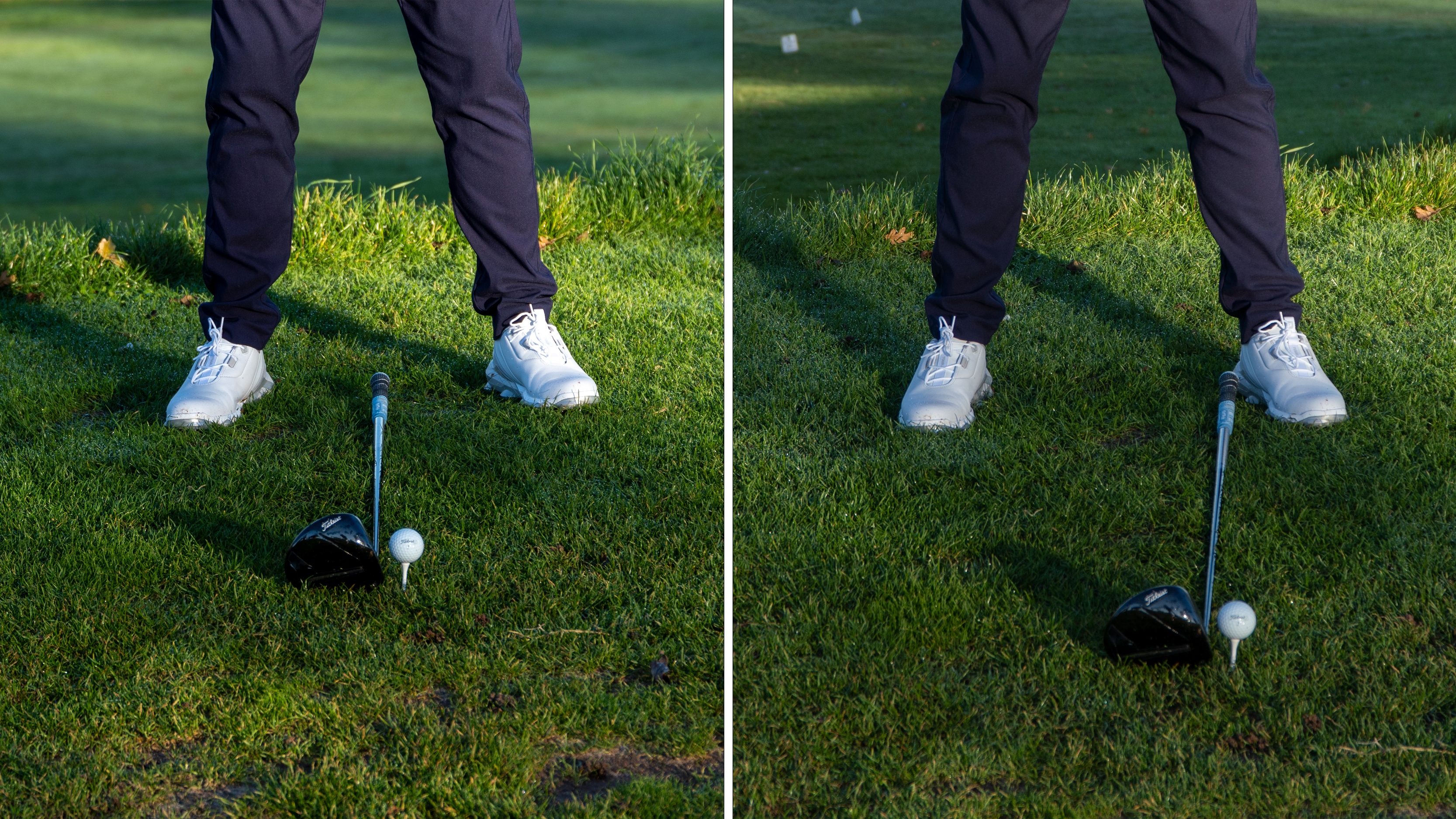
If your ball position has drifted too far back in your stance (left), move it in line with your lead heel (right)
The perfect ball position with the driver is inside your left heel. You can check this by laying a club down as a guideline as demonstrated above. This forward ball position will encourage a slight shoulder tilt, allowing the right shoulder to drop lower than the left, and the weight to favour your trail side 60-40. You should feel the pressure on the inside of your right instep. This will enable you to turn and load the weight powerfully into your right side in the backswing, then unload maximum stored power with an upward hit and through.

At address, you want to feel the pressure on the inside of your right instep (left for left-handers)
Bad habit: With the ball too far back in your stance you’ll lack shoulder tilt and the driver will bottom out low in the swing. This leads to a flat ball flight and a loss of height and carry distance.
3. Iron address position
The best iron players in the world are great ball strikers, connecting with the ball first and then the turf with a descending blow. With the wrong ball position this is virtually impossible to achieve. If it's too far forward in your stance, it can cause thin iron shots, while too far back and you're likely to need a cure for how to stop striking your irons heavy.

Inconsistency comes from a ball position that's too far forward with your irons (left). Aim for around the middle (right)
The ideal ball position for irons ranges from the centre of the stance with your wedges and graduates progressively forward to a club’s width inside your left heel for the long irons.

Use this handy tip to gauge the perfect ball position with each iron
Quick tip: Form your grip with the lead hand first and then simply allow the trail hand to hang naturally and follow. Notice how this levels the shoulders out and encourages a very neutral set-up position with weight spread evenly 50-50 between the feet.
Set-up for swing stability: Adopt a slightly narrower stance than the wide, power posture of the driver, with the feet just inside shoulder width apart. You should feel very stable in your legs and able to swing with complete control.
4. Takeaway
In the first few seconds of the golf swing an awful lot can go wrong - it’s the origin of many swing faults and why many golfers need an inside takeaway golf fix. The club dragging too far on the inside towards the toes or moving out and above the path are both destructive starts. Yet with the right checks, the takeaway can help you set the club with precision in the backswing.

At halfway back, the clubhead should almost cover the shaft
There are two important keys. Firstly, a phrase you’ve probably heard before - the one-piece takeaway. This essentially means moving the body and club together in sync as you start the swing. From here, the second reference point is halfway back, where the club should be parallel to the ground and the shaft in line with your feet. You can look at your reflection in a full length mirror at home to check this.

This is a great takeaway position, with the angle of the leading edge matching the spine angle
Top tip: The leading edge of the the face of the club should mirror your spine angle. To complete the backswing simply continue your shoulder turn and let the club follow to the top.
5. Impact point
During the winter months it is notoriously difficult to strike the ball. Wet ground conditions are our enemy and it’s easy to hit shots heavy. For me, strike is king. A centre strike on the face will increase ball speed, distance and shot direction accuracy.

Try this simple drill if you're struggling to make consistent contact
A great little drill to improve your ball striking involves two tee pegs. You can set this up at home in the garden, or even in the living room with two flat markers on the carpet to practice - you don’t even need to hit a shot. The two tees should form a gateway about an inch wider than the club allowing it to pass through without hitting them. The goal is simple: miss the tees! I’d recommend starting small with a swing no longer than a chip and gradually building up to full swings.
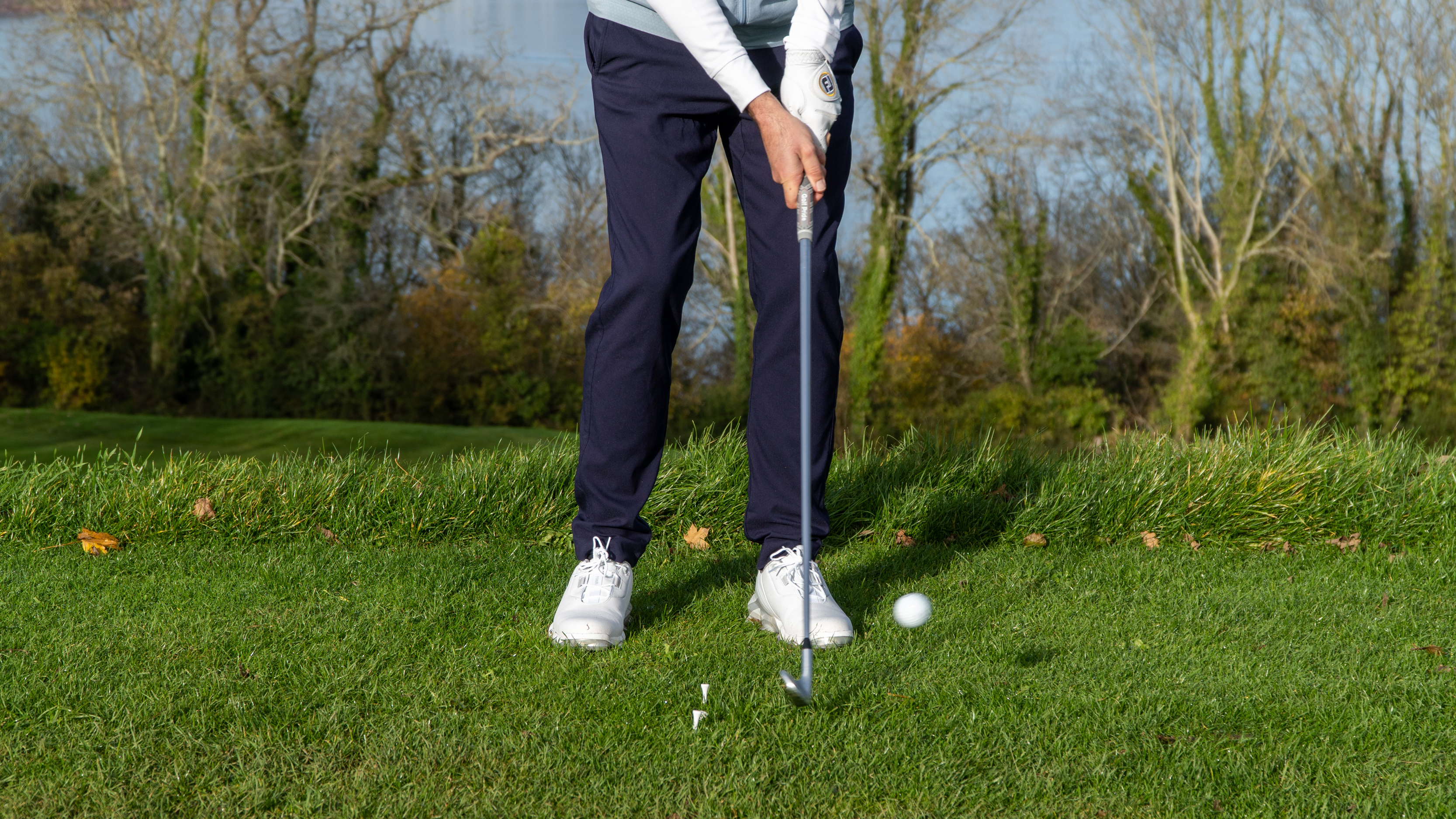
Start with short swings before upping the speed and length of swing
Quick tip: Push the nearest tee into the ground a fraction lower to avoid catching it. This is a great little warm up drill to use before you play, set it up in the practice net or beside the practice green.
Double check: You can also spray the club with foot spray and hit shots. This will reveal where you strike the ball on the face.
6. Putting action
Another challenge during the off-season is learning how to putt on winter greens. Even when the weather improves in the spring it can take a few months for the putting surfaces to get back up to pace. Poor putters compensate for the speed of the greens by hitting the putt harder. This makes distance control difficult to judge. A better solution is to maintain an even metronomic tempo and simply lengthen your stroke. Use the 'tick-tock' of a clock as a reference.
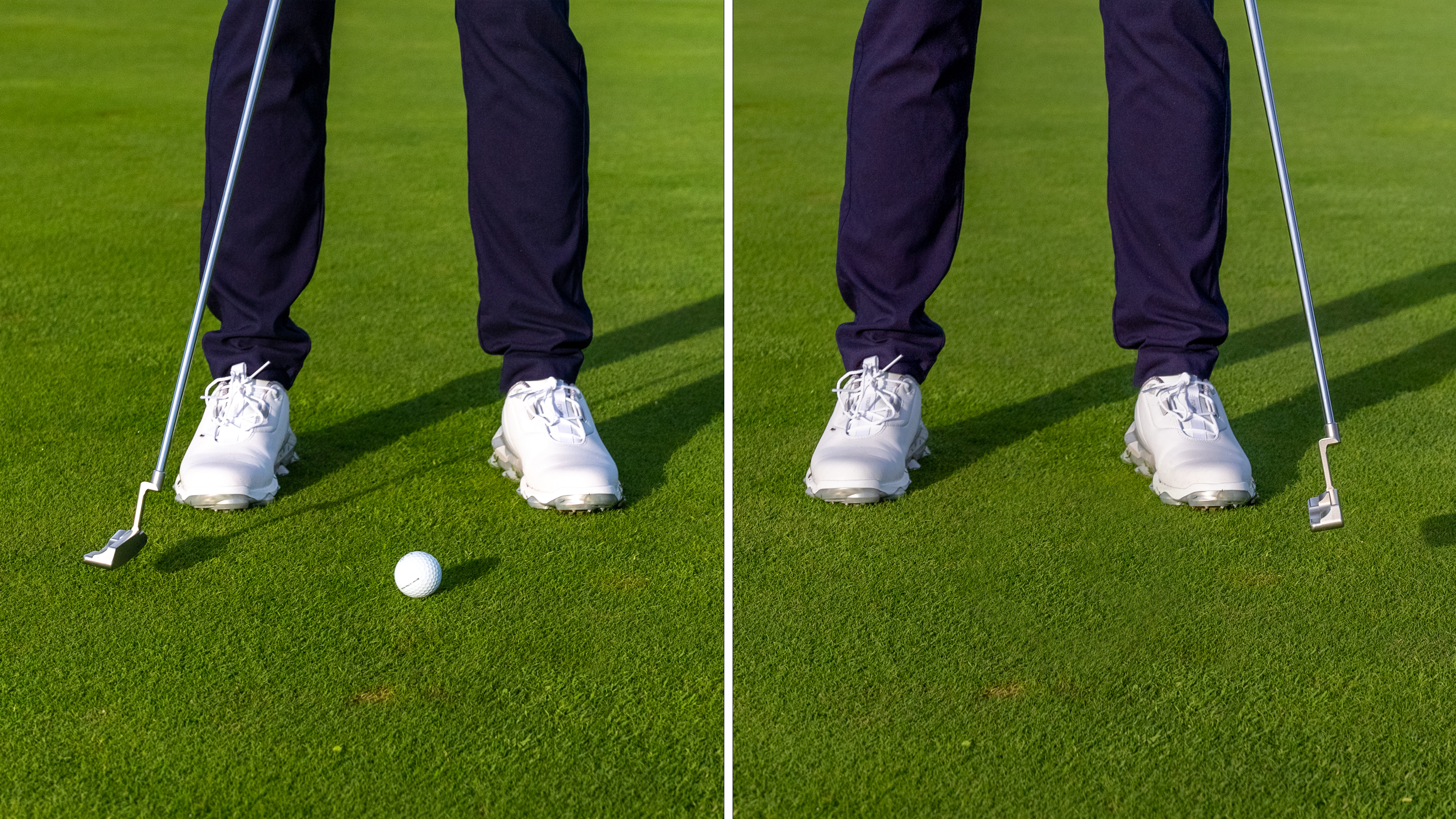
Use the tick-tock of a clock to improve the rhythm of your stroke
Top tip: If you are still struggling with how to judge putting distance, you can move the ball position slightly forward (half a ball width) in your stance. This adds more loft to the putter as it strikes the ball, helping it to leave the putter face faster with more topspin and encouraging a truer roll.
7. Chipping technique
As with the long game, it’s easy to slip into bad habits with the set-up position for a chip shot. I see golfers struggling with the ball positioned too far forward in the stance, trying to ‘help’ shots into the air with their hands, or conversely the ball too far back, club handle forward, driving the club destructively down into the ground too steeply. To make matters worse, it's easy to overcomplicate the fix.

A poor ball position (left) will lead to poor strikes. Set up with the ball in the middle of your stance and weight slightly forward (right)
Instead, use the off-season to get back to basics and really simplify your set-up. I’d suggest using a technique very similar to a putt. Start by standing a fraction closer to the ball, so that the heel of the wedge just lifts a touch off the ground. Then use your putting grip.

With the heel a fraction off the ground, make a pendulum-style putting motion to crisp up your strike
Let your weight favour your forward foot (70-30) and make a pendulum-style putting stroke, maintaining a smooth tempo. The club should simply graze the grass, allowing you to clip the chip shot away cleanly and start to spin the golf ball.
Top tip: You can use this technique with any club in the bag, from wedge through to a hybrid. The hybrid chip shot is really useful if you are a long way away from the pin.

Carly Frost is one of the golf industry’s best-known female writers, having worked for golf magazines for over 20 years. As a consistent three-handicapper who plays competitive club golf at Parkstone and the Isle of Purbeck courses in Dorset every week, Carly is well-versed in what lady golfers love. Her passion for golf and skill at writing combine to give her an unbeatable insight into the ladies game.
Carly’s role at Golf Monthly is to help deliver thorough and accurate ladies equipment reviews, buying advice and comparisons to help you find exactly what you are looking for. So whether it’s the latest driver, set of irons, golf ball, pair of shoes or even an outfit, Carly will help you decide what to buy. Over the years she has been fortunate to play some of the greatest courses in the world, ranking Sea Island, Georgia, USA, among her favourite golf resorts. Carly's aptly-named son Hogan is already hitting the ball as far as mum and will undoubtedly be a name to watch out for in the future.
Carly is a keen competitor and her list of golfing achievements are vast. She is a former winner of the South West of England Ladies Intermediate Championship, a three-time winner of the European Media Masters and she once beat an entire start-sheet of men to the title of Times Corporate World Golf Champion. She has played for both the Dorset and Surrey County Ladies first teams and is known for her excellent track record at matchplay.
Carly holds the ladies course record (68) at her home club Parkstone and her lowest competition round (seven-under-par 65) was carded in the pro-am of the Irish Ladies Open at Killeen Castle, playing alongside Solheim Cup superstar Anna Nordqvist. Although her current handicap index has crept up to 3.7 since Covid she has her sights firmly set on achieving that elusive scratch handicap and hopefully playing for her country when she’s 50.
Carly’s current What's In The Bag?
Driver: Callaway Epic Max, 10.5°
Fairway wood: TaylorMade SIM2, 15°
Hybrids: Titleist TS2, 19°, 21°, 24°
Irons: Mizuno JPX900, 5-PW
Wedges: Cleveland RTX, 52°, 56° and 58°
Putter: Scotty Cameron Futura X5
Ball: 2021 Callaway Ladies SuperSoft
-
 LIV Golf Promotions Final Round Tee Times 2026
LIV Golf Promotions Final Round Tee Times 2026There's a tight leaderboard with one round to play of LIV Golf Promotions, as players including Richard T. Lee and Anthony Kim remain in contention for one of three cards to the big-money League
-
 Anthony Kim In Contention For One Of Three LIV Golf Cards As Richard T. Lee Leads Promotions Event Heading Into Final Round
Anthony Kim In Contention For One Of Three LIV Golf Cards As Richard T. Lee Leads Promotions Event Heading Into Final RoundAnthony Kim is one of three players tied for second in pursuit of three LIV Golf cards, with Richard T. Lee leading the way